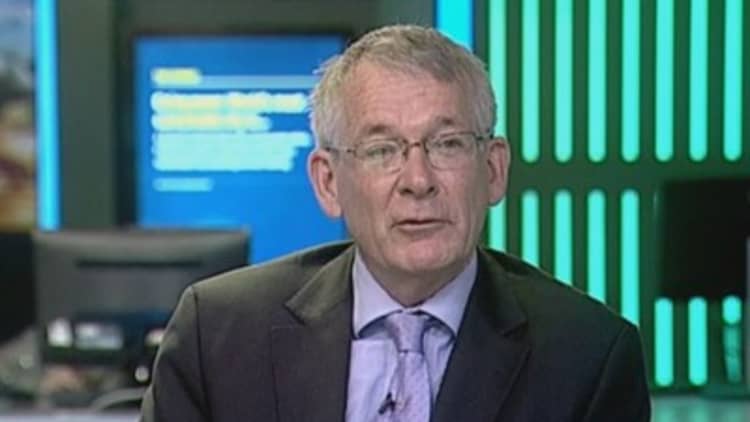Global gold demand slumped to its lowest level in five years in 2014 as bar and coin buying plunged and jewelry purchases cooled, according to the World Gold Council (WGC).
Overall demand totaled 3,924 tonnes, down 4 percent on year at its lowest level since 2009, the WGC's quarterly demand trends report, published on Thursday, showed.
Total bar and coin investment fell 40 percent to 1,064 tonnes as investors, who had made major purchases in 2013 amid a sharp fall in prices, held back from further purchases, the industry group said.
In China, where demand for gold bars and coins halved, "investors, with already-stuffed coffers, needed a strong price signal to add to their holdings. But none was forthcoming. Meanwhile, the recovery in the domestic equity market – particularly in the latter half of the year – provided investors with an increasingly appealing alternative," WGC said.

"The government crackdown on corruption also continued to have a strong impact on demand in this area, with small gold bars being the most affected by the anti-bribery push," it added.
India: top gold consumer in 2014
When it came to jewelry, the demand story was mixed in the world's largest gold consuming nations: Chinese buyers held back, while Indian consumers stepped up purchases.
Read MoreGold may 'free fall' if it hits $1,150: Expert
In India, jewelry demand rose 8 percent on year to a record 662 tonnes, in spite of government measures designed to restrict gold imports being in place for much of the year. Wedding and festival related purchases drove robust demand of 179 tonnes in the fourth quarter, up 19 percent on year, WGC said.
Meanwhile jewelry demand in China fell 33 percent to 624 tonnes. Net-net, global jewelry demand fell 10 percent to 2,153 tonnes. Jewelry remains the biggest source of demand for gold.
As such, India regained its position as the world's largest consumer of gold in 2014, ahead of China.
ETF outflows cool
Compared with 2013, gold prices were relatively stable in 2014, ending the year close to where they began around the $1,200 level and averaging $1,266 for the full year. A slowdown in ETF outflows to 159 tonnes in 2014 from 880 tonnes in the previous year helped bring stability to the markets.

"More recently, sentiment has turned tentatively positive in this space. So far in 2015, ETFs have seen inflows of around 60 tonnes the vast majority (over 90 percent) of which has been into U.S.-based funds," WGC said.
"Disappointing equity performance, combined with the actions of the Swiss National Bank, turned the spotlight on gold's role as a store of wealth. And while long positions on COMEX have been relatively stable over recent months, short positions have fallen sharply since November," it added.
Central banks provide support
Central banks, meanwhile, provided some support to the gold market, with purchases rising 17 percent to 477 tonnes in 2014.
The Central Bank of Russia was the most prominent purchaser adding 173 tonnes to its already sizable stocks last year.
Russian holdings are now estimated at over 1,200 tonnes, which accounts for 12 percent of its overall reserves, according to WGC.


